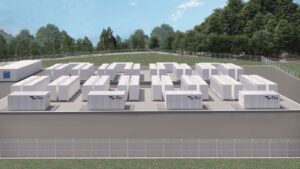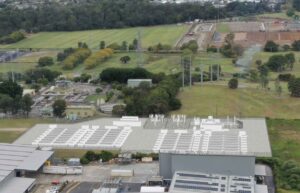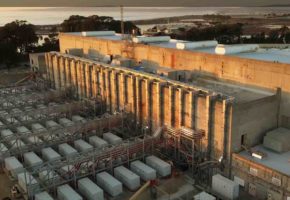It is just over six years ago since Australia’s first big battery – the so called Tesla big battery at Hornsdale – made its debut on the grid, and many people are still struggling to get their minds around what it is they actually do.
Most of the big batteries on Australia’s main grids have been designed to address specific system issues – helping out frequency control, providing system support by acting as a sort of shock absorber, and more recently for the more “conventional” task of soaking up solar and shifting to the evening peak.
Big batteries – as their number, capacity and hours of storage all grow – are now starting to have a more visible and significant role in meeting peak demand in the evening peaks.
This is particularly in South Australia which leads the world in the uptake of wind and solar with an average of more than 71 per cent in the past 12 months, and which has led the country, and the globe, in the integration of battery storage technologies.
We’ve noticed in recent months the increasing share of output in the evening peaks for battery storage – often more than 10 per cent – and so we reached out to analysts at GPE NEMLog to find out what has been the highest share to date.

According to GPE’s Geoff Eldridge, the peak for battery storage occurred in South Australia on September 28, at 6.50pm, when the combined output of the Hornsdale Power Reserve, the new Torrens Island battery, and the Lake Bonney and Dalrymple batteries, accounted for 340 MW, or 20.8 per cent of generation.
The batteries accounted for a significant share of the output between 6pm and 7pm (the bulk of that capacity has storage of one hour or a little over), and the 20 per cent share it took basically comes from the gas peakers, which accounted for 40 per cent of the output at the time.
At the time, wind energy was providing just 12.6 per cent, and the sun had set so large scale solar had stopped generating and rooftop solar was down to its last megawatt. The batteries, however, had been charged – mostly with solar, but also with some wind.
These market shares for battery storage are expected to grow rapidly in other states too, and for a longer time period as more four hour batteries are introduced to the grid, particularly in Western Australia where the mandate is specifically to soak up midday solar output and shift it to the evening peaks.
W.A. has at least four big batteries under construction, or newly completed, that will provide more than 900 MW of capacity and 2,200 MWh of storage as they come on line over the next two years, with more to come.
See RenewEconomy’s Big Battery Storage Map of Australia










